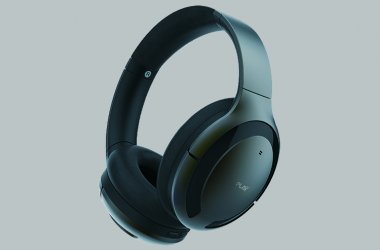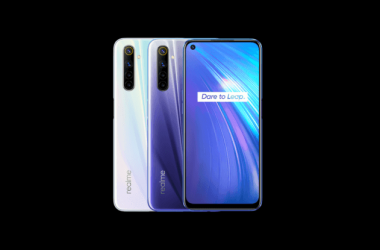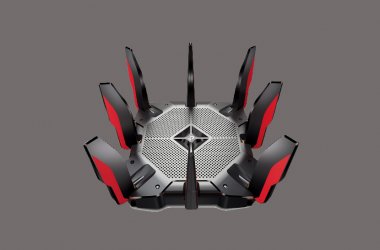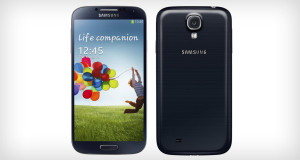 Recently, I wrote that you can forget about the Samsung Galaxy S4, because the HTC One was the Android phone of the moment. To be fair to the Samsung, I’d only played on friends’ devices, and hadn’t yet conducted a proper test, so I may have jumped the gun a little.
Recently, I wrote that you can forget about the Samsung Galaxy S4, because the HTC One was the Android phone of the moment. To be fair to the Samsung, I’d only played on friends’ devices, and hadn’t yet conducted a proper test, so I may have jumped the gun a little.
Since then, Samsung has lent me its new flagship smartphone, so it’s time to give the device a fair trial and see what’s what. For the purposes of this review, however, I’ll still be benchmarking it against the HTC One, because, in my mind, the One is still the phone that Samsung has to beat.
The looks
The S4 sports a similar design language to its predecessor. Indeed, you have to look quite carefully to tell them apart at all. The most obvious difference is a metal band around the edge, which makes the device feel like much more of a quality product than the S3. The screen is a tad bigger at five inches, though the device as a whole is 0.7 millimetres thinner than its predecessor. It’s also three grams lighter than the S3.
These are all tangible improvements over the S3, but when you compare it to the HTC One, I’m not convinced that thinner and lighter is the way that Samsung should have gone. Lightness is good in terms of practicality, but it also means you’re sacrificing that nice, weighty feel that you get from quality products. There’ no doubting that the S4 is manufactured to a high standard, but it doesn’t feel as special to hold in your hand as the One – or indeed the iPhone 5 or Nokia’s hefty Lumia 920.
Usability
While Samsung hasn’t sold quite as many Galaxy S4s as it said it would, millions have still bought the device, and there’s a good reason why – it’s an excellent phone to use. Anyone used to the S3 will feel right at home on the S4, though they’ll also notice the subtle improvements that have been made to the user experience.
For example, settings are now divided up into different sections, which, while confusing at first, actually make it easier to find what you’re looking for. What’s more, if you want to change something quickly – say, switch your mobile data off or turn your VPN on – you can use one of the quick-menu buttons that appear when you drag down the notification bar.
Samsung seems to have a pretty good idea of what options you’ll want to change the most often, and has laid these buttons out really sensibly. On the HTC, you’ll have to open the settings menu and go into however many sub-menus to change what you want, which feels like a drag after you’ve gotten used to Samsung’s way of doing things.
The screen itself is a Full HD Super AMOLED unit that offers 441 ppi, and it’s seriously nice to look at. Colours are bright, shapes are sharp and blacks are deep – there isn’t much else on the market that can match this screen quality. What’s more, if you’re got a Samsung Smart TV, you can mirror your phone’s screen on the TV, which is good fun. This feature is actually much more useful than you might think – it suddenly becomes much easier to show your friends and family your latest photos if you’ve got a big screen to connect to. And pairing the phone and TV is a cinch. This kind of home entertainment convergence is really, really cool, and I suspect Samsung will want to push it further over the coming years.
This is a good thing because, although the call quality is fantastic on the S4, the main phone speakers are a little inadequate. You can use the phone to watch a YouTube video if you’re on your own, but add a couple of friends to the mix and the volume simply doesn’t go loud enough. There are all sorts of great Bluetooth speaker sets around, though, so if you’ve got one of those, you’re set. Just for the record, though, the HTC’s front-facing speakers don’t give you any issues at all.
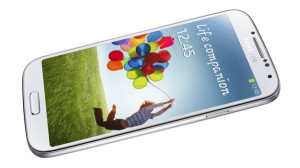 Productivity
Productivity
When I’d finally gotten the IT team to set up Microsoft Exchange on my S3, I was seriously impressed with the stock email client that came on the phone. The S4’s client is largely similar, though it sports a slightly more polished design and rearranges a couple of buttons. The calendar has also been polished, and the home screen widget for it makes it really easy to see what you’ve got scheduled in for the day. The HTC’s email client and calendar can’t hold a candle to this.
I’d love to leave it there, but unfortunately my joy at using the S4’s email client was short-lived. A couple of days after setting up Microsoft Exchange, a weird – and very overzealous – spam filter started kicking in. It put tons of legitimate emails into a junk folder that it had created all by itself, and when it synced, the same would happen on my desktop, too. I spent about half a day trying to fix this, but the phone wouldn’t stop, so I no choice but to stop using the email client. If I’d bought the S4 with my own money, I’d have been seriously ticked off with this.
Aside from that, the productivity apps that come as standard – like S Note, Calculator, and so on – are everything you’d expect. S Note, in particular, is one of the best mobile word processors out there. On the whole, minus the email issue, you can be seriously productive with this device.
The camera
The S4 sports a 13-megapixel camera on the back and a 2-megapixel camera on the front. Both are capable of recording Full HD video, and the front unit is particularly good for video chats or taking selfies.
The rear-facing camera, however, is something of an enigma. You get lots of pixels, sure, but it can be quite difficult to take decent shots. The autofocus isn’t all that impressive, and the anti-shake function doesn’t seem to work that well. Even under well-lit conditions, I had to do a few takes before getting the shot I wanted – for some reason, way too many of the shots were coming out blurry. This is strange because the S3’s camera seemed to be much better, so I’d like to give the S4 the benefit of the doubt. Perhaps the review unit I picked up was a little worse for wear. I’m confident the camera is decent.
That said, the HTC One’s 4-ultrapixel camera is fantastic – it’s fast, smooth and serves up fantastic images under a wide array of lighting conditions. It’s just a shame I can’t weigh the S4’s camera up against it properly.
The new stuff
What’s already been mentioned is pretty par-for-the-course when it comes to a flagship smartphone. But Samsung made a big noise about the S4’s new software features when it launched the device a few months ago. For example, with the camera, you get Dual Shot, which allows you to use the front and rear-facing cameras at the same time. Apart from creating silly picture montages with friends, I’m not sure I see the point of this, but I suppose it’s nice to have the option.
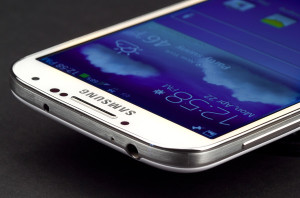 Features I really don’t get are things like Smart Pause, which will pause a video if you look away from the screen. Sounds great, but it’s actually a bit of a hassle if you want to look up to speak to someone. More often than not, you’re happy missing that second of video to do that, and it’s doubly annoying when the phone doesn’t register your eyes back on the screen, as it means you have to physically press the play button.
Features I really don’t get are things like Smart Pause, which will pause a video if you look away from the screen. Sounds great, but it’s actually a bit of a hassle if you want to look up to speak to someone. More often than not, you’re happy missing that second of video to do that, and it’s doubly annoying when the phone doesn’t register your eyes back on the screen, as it means you have to physically press the play button.
You also get Air View and Air Gesture, which allow you to swipe across the screen without actually touching it. It’s futuristic and cool, but in day-to-day life, you end up switching it off because it’s just much easier using the touchscreen to control the device.
Indeed, I ended up switching most of these functions off – the S4 makes a good enough case for itself without this added garnish. And I can’t help thinking that Samsung’s resources would have been better placed creating a killer keyboard or more ways to connect separate devices. That said, maybe some people will find uses for these features, and perhaps developers will start leveraging them to create amazing new apps.
The verdict
I came into this looking to compare the S4 with the HTC One, so the question is: which would I buy? On pretty much every quantifiable level, the S4 comes out on top. The S4’s display is bigger and more beautiful, the S4 is thinner and lighter, and the S4’s 1.9 GHz processor bests the One’s 1.7 GHz unit. What’s more, with HTC in deep financial trouble, buying the S4 feels like investing in a company that knows what it’s doing.
If you based your purchase on the numbers alone, you’d almost certainly walk away with the S4. If you wanted the best bang for your buck, you’d almost certainly walk away with the S4. You’d marvel at what it can do, and you’d be safe in the knowledge that you’ve bought yourself one of the most capable smartphones around.
I would, however, say that, with so many smartphones now offering so much, people are looking to phones to make statements about themselves. iPhone users have been doing this for years, and now the HTC One is Android-powered flipside of that.
The Samsung, on the other hand, doesn’t make a statement – it’s just a very, very good phone. Because of this, it might win most tests, but compared to the HTC One, it absolutely doesn’t win your heart.



